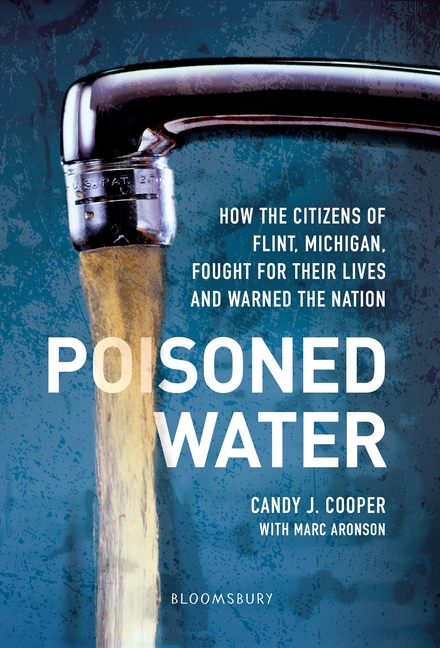Meet-the-Author Recording with Candy J. Cooper
Poisoned Water: How the Citizens of Flint, Michigan, Fought for Their Lives and Warned the Nation |
Candy J. Cooper introduces and shares some of the backstory for creating Poisoned Water: How the Citizens of Flint, Michigan, Fought for Their Lives and Warned the Nation.
Translate this transcript in the header View this transcript Dark mode on/off
Candy J. Cooper: Hi. My name is Candy Cooper, and I am the author, with Marc Aronson, of Poisoned Water: How the Citizens of Flint, Michigan, Fought for Their Lives and Warned the Nation.
Before I wrote Poisoned Water, I worked for four different daily newspapers. Throughout all of those years, I've been guided by two main questions in my writing: What is fair? And what is true? I get upset when something seems unfair or untrue. I also grew up in Michigan, and I worked for five years for the Detroit Free Press, so the Flint story was on my radar as it was unfolding.
One day, out of the blue, I got an email from a friend, Marc Aronson. He was looking for a journalist to work on a young adult book about the Flint water crisis, and the minute I read his email, I think my truth and justice sensors just went wild. I just had this immediate sense that this story was meant for me to tell. I decided that I would do everything in my power to center the book around the experiences of Flint residents, and to use their words, verbatim, to quote them, and to try to represent as accurately as possible the struggles that Flint residents went through.
Flint was, at one time, the most segregated city in the North. It's very entrenched, and that's not a very hopeful message to walk away with. But what I found in my reporting was that Flint residents from all different walks of life: Black and white, educated and not, blue-collar, white-collar, cross-cultural, cross everything; in the end, there was a great coming together of Flint residents who were so active, creative, and persistent in their activism, they forced, ultimately, a change back to Great Lakes water -- what should have happened. So, in some ways, I think it's a story of ordinary people coming together to change a problem, and I hope that readers can look at this and, in some ways, be inspired by that. Because the world is full of these problems that feel, often, intractable, and yet, by taking them on bit by bit and by working with others, we can make changes in the world.
I have one passage from early in the book where I'm describing the language that begins to be used to describe the water, and here is the start of that passage:
A shared vocabulary of bad water emerged. The mayor's Pure Flint, Michigan, Natural Mineral Water smelled like excrement. It felt like burning on the skin. It looked cloudy, contained a black residue, and left a filminess on the tongue. One resident drank it and vomited. Another took a sip and gagged. A third was so repulsed by the smell, she couldn't bring a glass of water to her lips. It was fishy, putrid, and discolored, yellow like urine, brown like tea, smelling like a sewer. It was gold, dirty, dingy, and stinky. Citizen worries, officials suggested, were unfounded. "It's a quality, safe product," Mayor Walling told the Flint Journal in a June 12th story that reported on the public outcry at the council meeting. "I think people are wasting their precious money buying bottled water."
This Meet-the-Author Recording with Candy J. Cooper was exclusively created in September 2020 by TeachingBooks with thanks to Bloomsbury USA.



